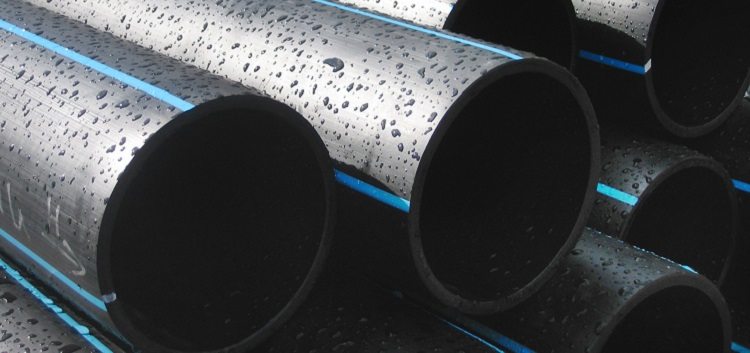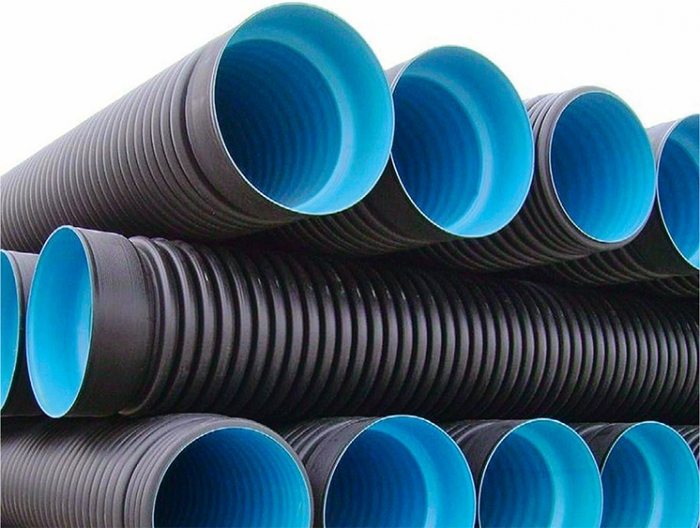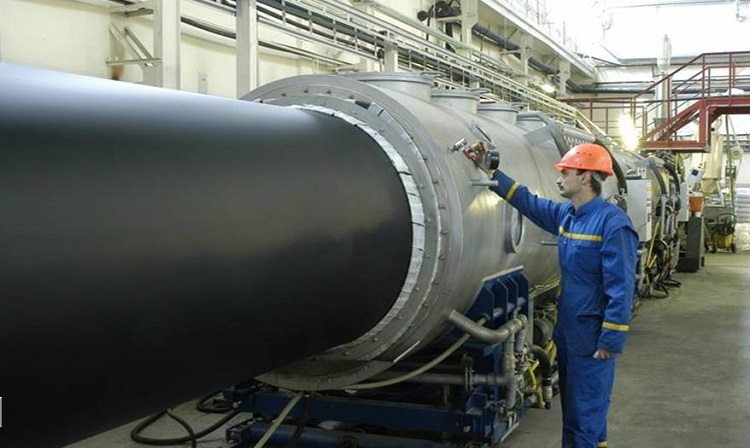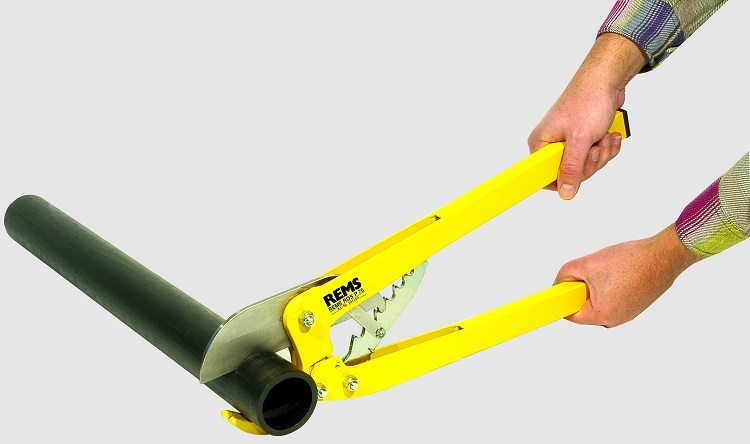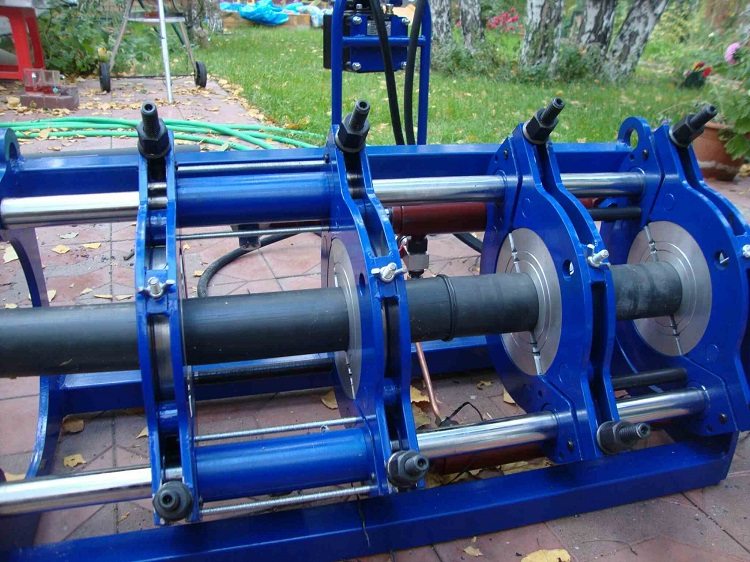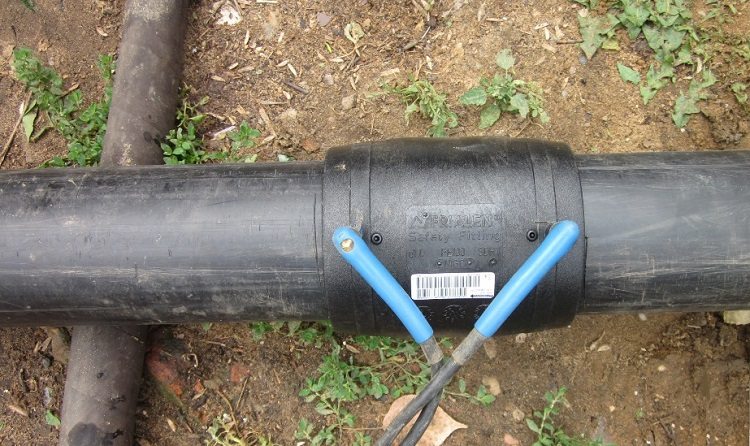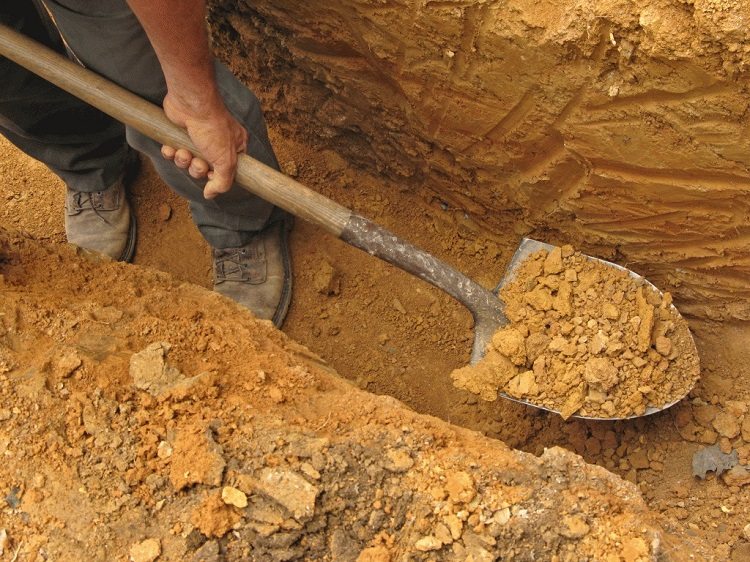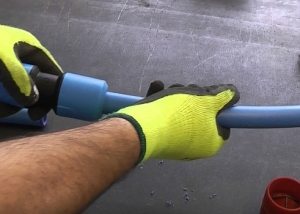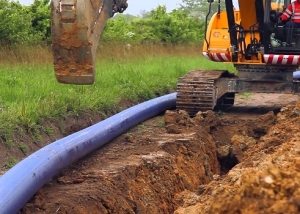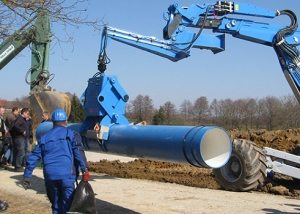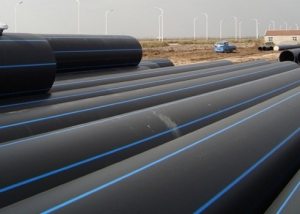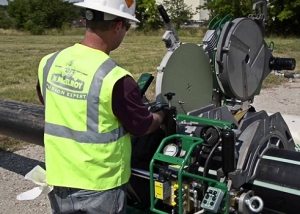Currently, plastic pipes are increasingly replacing similar-purpose products made of other materials. Today, HDPE pipes are very popular. They can be used to create almost any kind of communication. The increased strength of this type of pipe is due to the fact that low-pressure polyethylene (HDPE) is used as a raw material for their manufacture.
Content
Types of polyethylene for pipe production
Scope of application polyethylene pipes, like any other building material, depends on the production method that determines the physical characteristics of the final product. Based on this criterion, polyethylene is low, high and medium pressure.
It is interesting! The names are not related to the characteristics of the material itself, but exclusively to the conditions of its production. Moreover, the strength of polyethylene is inversely proportional to the pressure in the autoclave. Therefore, polyethylene made with a high value of this parameter is also called low density polyethylene. If its synthesis is carried out at low and medium pressures, high density polyethylene is obtained.
The type of polyethylene determines the allowable volume of the working medium flowing through the pipes per unit time without violating their integrity. Depending on the pressure that the pressure pipe made of polyethylene is able to withstand, light, medium and heavy products are distinguished. The former operate at 0.25 MPa, and the latter at 1 MPa. Medium type low pressure polyethylene pressure pipes, according to the name, occupy an intermediate position: they withstand 0.6 MPa.
Recommendations for use and product design
Experts advise the use of pressure PND ˗ pipes for the following purposes:
- creation of water supply networks, including trunk pipelines;
- laying sewage lines for various purposes. The use of this material is recommended with a large depth of the engineering network;
- gas pipelines with various diameters;
- installation of industrial processing lines;
- irrigation and watering systems.
Smooth pressure head polyethylene pipes for internal water supply are made of cross-linked low-pressure polyethylene. Currently, there are three technologies for the production of these products:
- Pneumatic formation. First, the polymer is injected into the mold. And giving the final product the necessary geometry fulfills the pressure produced by the pneumatic supercharger.
- Injection molding. Here, too, at first a certain volume of thermoplastic material is injected into the mold. After that, the polymer is evenly distributed on the walls under high pressure.
- Extrusion. A pressure pipe made of polyethylene is obtained by extrusion, followed by hardening of the thermoplastic mass.
Depending on the technology, various modifications of pressure pipes are obtained at the output. Polyethylene pipes of this category comply with European standards PEX-c, PEX-b and PEX-a.
In addition to the internal and external diameters, pressure pipes made of HDPE differ in the design of the walls. Where the pipeline passes under the roadway, in difficult soil and in other areas with increased load, a double-walled pipe is usually used. In this case, the corrugated outer shell, characterized by increased rigidity, withstands the external load. And the internal smooth wall allows you to easily transport the working environment.
Helpful advice! When buying HDPE pipes, pay attention to the marking. There should be indicated its purpose. On the pipe of household drinking type there is a corresponding designation. Otherwise, it should be marked "technical", and next to it is the GOST number.
The table shows the comparative characteristics of the modifications.
Table 1
| Material | The temperature at which oxidative degradation begins | Degree of crystallinity | Softening Start Temperature | Softening point |
| WITH | % | WITH | 126 | |
| Pex-a | 241 | 50 | 86 | 126 |
| Pex-b | 254 | 51 | 92 | 123 |
| Pex-c | 231 | 51 | 87 |
Advantages and features of plastic products
Pressure pipes made of low-pressure polyethylene act as a modern alternative to their obsolete moral and physical metal predecessors. Compared to steel and cast iron products, they compare favorably with the following advantages:
- lack of corrosion;
- convenience in work. Pipes of this type are easy to cut. Therefore, they can be easily sized to fit not only at the construction site, but when laying the pipeline in the field;
- high flexibility of a polyethylene pipe;
- relatively light weight;
- increased hygiene standards;
- resistance to temperature extremes.
In addition, polyethylene is chemically inert. Therefore, pipes made from it are suitable for transporting acids, alkalis, gaseous substances, and not just water.
Having got an idea of what is meant by the PND-pipe concept and having familiarized yourself with their operational features, you will be able to choose a suitable brand for the needs of any type of pipeline (domestic or industrial). Moreover, the service life of engineering communications will be 2 ˗ 3 times longer than when using metal products, and the cost will be 5 ˗ 10 times less.
Connection methods for installation of pipelines
In practice, several methods are used HDPE connections ˗ pipes, the main of which are presented below.
Butt welding
The reliability of the joint obtained by this method is not inferior to the strength of the polyethylene pipes themselves. But the application of this method is not always available. You can only weld pipes of the same diameter. In addition, this will require special equipment. It provides heating of the ends of the connected segments with their subsequent compression with a certain effort.
Such units are used mainly when laying external trunk lines. For domestic welding, simpler devices are used, the design of which includes a flat heating element. In this case, the connection is carried out manually.
Important! When adopting a welding method, pay special attention to the accuracy of alignment of the ends of the pipes.
Diffusion welding
This connection method is performed as follows: first, the outer surface of the pipe and the inner fitting are heated using a soldering iron equipped with a special nozzle. After the polyethylene layer melts, the components of the pipeline are inserted into each other, after which they are cooled.To prevent the connection from leaking from the outer surface of the fittings, the chamfer is removed. This is done with the help of a foskosnimatel. If this is not at hand, a sharpened construction knife will do.
One of the options for diffusion welding is the connection of 2 segments of the pipeline into the socket. This method does not require application fitting. Its function is performed by one of the fixed elements present in the structure. Ease of implementation is the main advantage of diffusion welding. It does not require special skills and complex equipment.
Use of polyethylene couplings with an integrated electric coil
Resistor heating couplings causes melting of the surfaces of adjacent segments of the created pipeline. Thanks to this, their reliable tight connection is formed. Equipment for such welding can be adjusted manually (process duration, temperature, etc.). But it is better to perform it in automatic mode, when all data is entered into the device from a special card. It contains all the characteristics of the material used: wall thickness, pipe diameter, type of polyethylene, etc. This solution will provide high quality joints.
Flange method. With its help, a detachable connection of PND - pipes is obtained. First, special fittings are welded to the ends of the pipeline segments. Then they are interconnected using bolts. Gaskets are used to seal joints. To avoid distortions, the bolts must be tightened crosswise. This will ensure uniform crimping of the flange surface.
But there is the following limitation: the diameter of the connected pipes should not exceed 110 mm. If the value of this parameter is greater, the connection is carried out by butt welding or by means of thermoresistive fittings.
To connect HDPE ˗ pipes of smaller diameter are used compression fittingsmade of both polymers and bronze. The simplicity of the design ensures their high reliability. They can withstand pressure up to 25 atmospheres without any problems.
Important! When choosing a connection method, it is necessary to take into account not only all the nuances of installing HDPE pipes, but also carefully observe the conditions and sequence of work. This will ensure a long service life of do-it-yourself engineering communications and will allow you to do without their repair for a long time.
How to lay plumbing and sewer. Some nuances
The installation of such networks must begin with the marking of their passage through the site. For this, pegs and a string are used. Then the following work is performed:
- excavation. You can do this manually or using special equipment. It all depends on the amount of work;
- trench bottom preparation. After removing the soil, a sand cushion is created. The use of fine gravel is also allowed. Laying a pressure polyethylene pipe on such a base will exclude the possibility of its deformation during further operation;
- pipeline installation. The choice of components and the necessary equipment depends on the method of connecting the elements included in the engineering system proposed for use;
- pipeline insulation. This procedure must be performed if the pipe was laid above the mark of the depth of freezing of the soil;
- backfill.
You can fill up the excavated soil, but first you need to loosen the earthen blocks and remove the large stones present in it.
The main requirement for laying sewage is: for a sewer pipe, it is necessary to provide a slope. Its value should be 1˗2 centimeters for each linear meter of the pipeline.
Compliance with the technology of laying HDPE pipes in the ground will ensure the effective and long-term functioning of utilities, reduce the level of labor costs for their maintenance and reduce operating costs.
